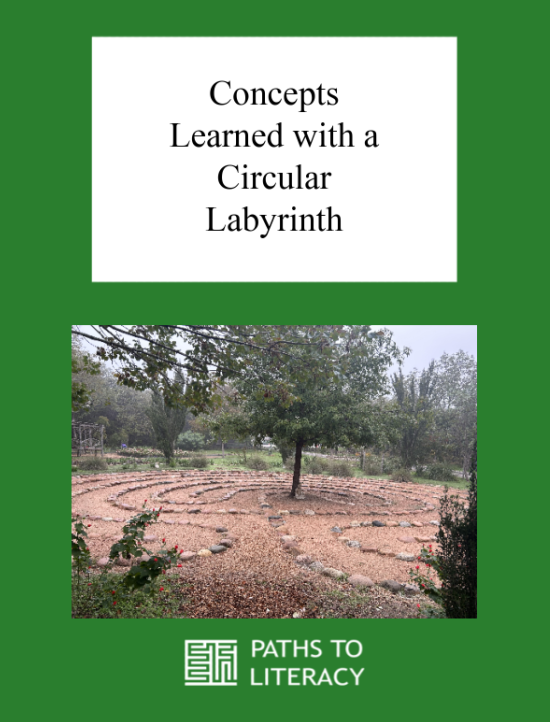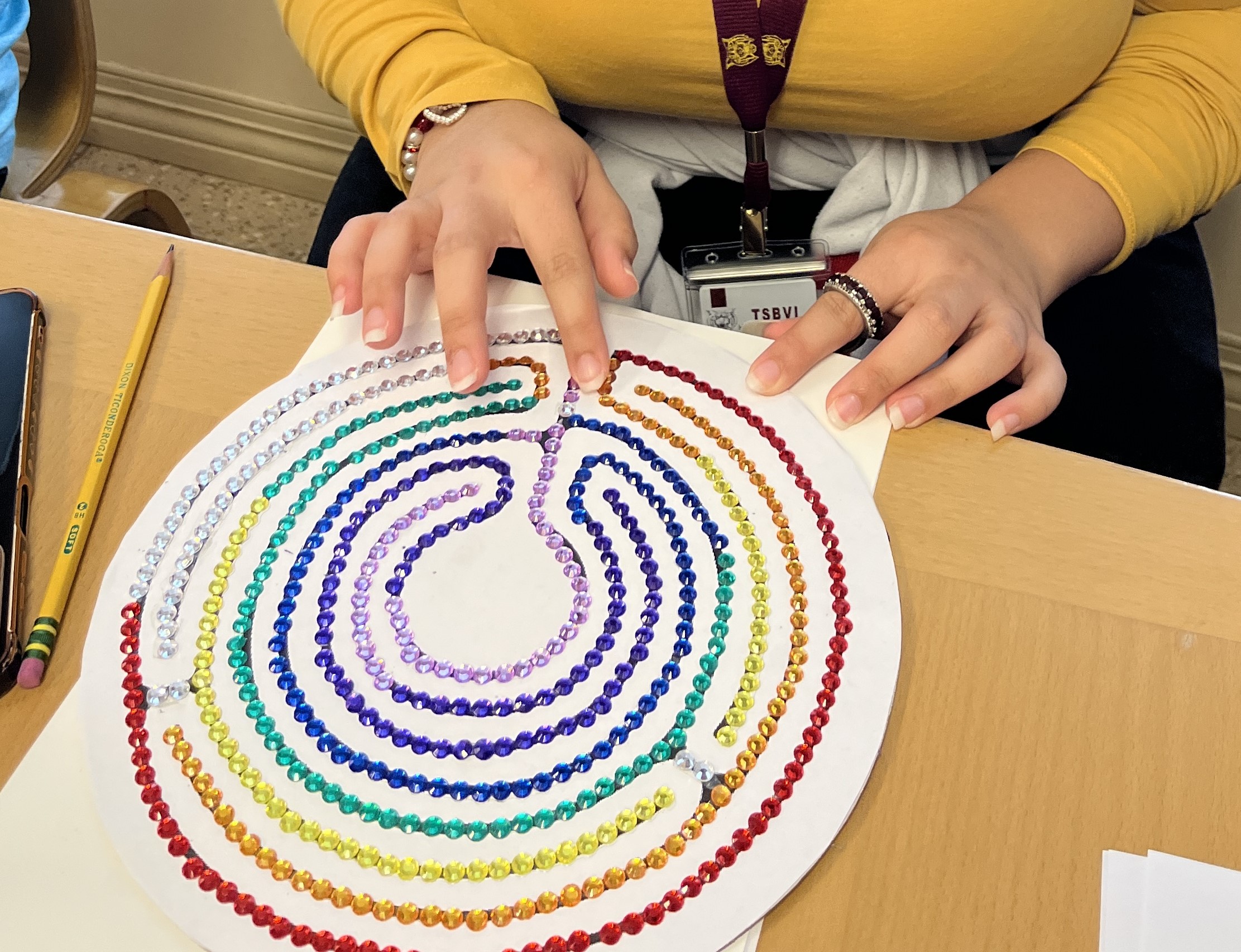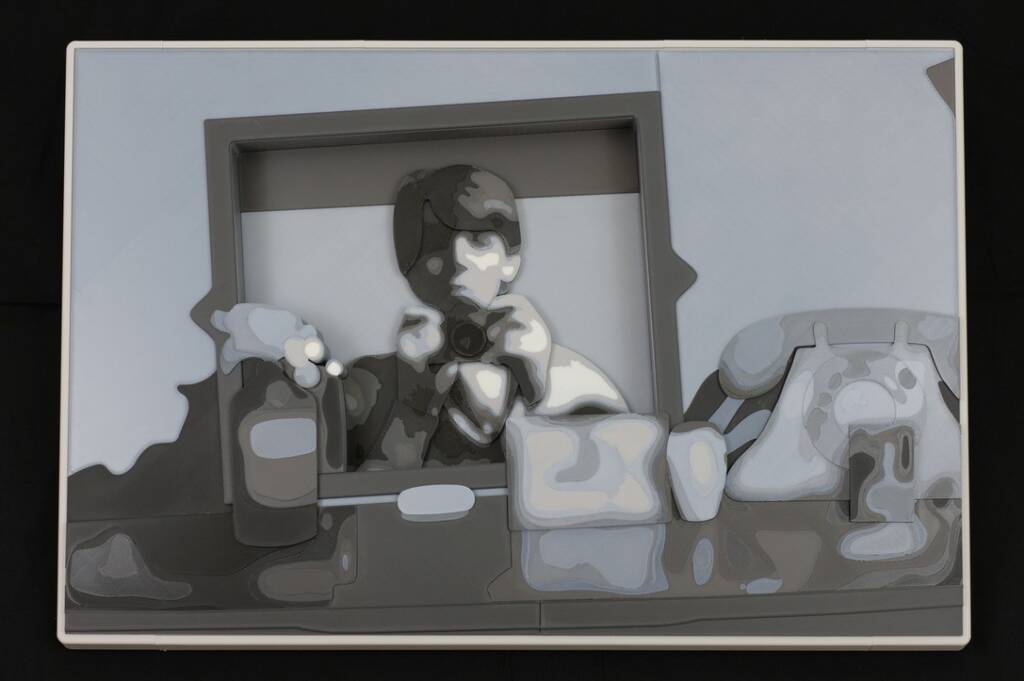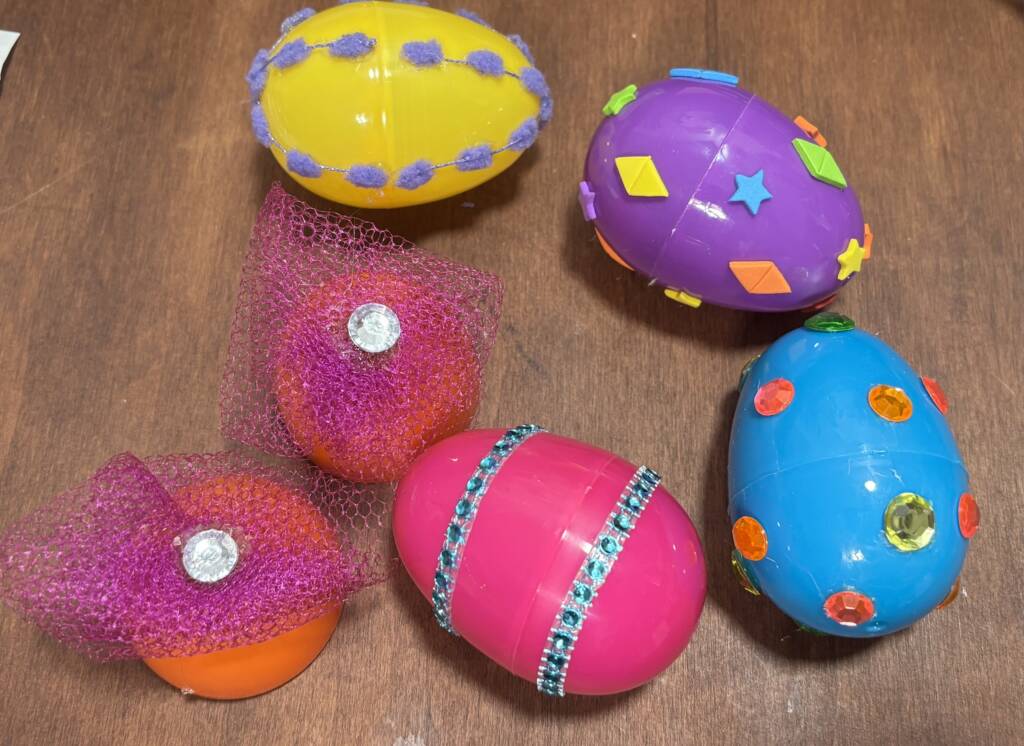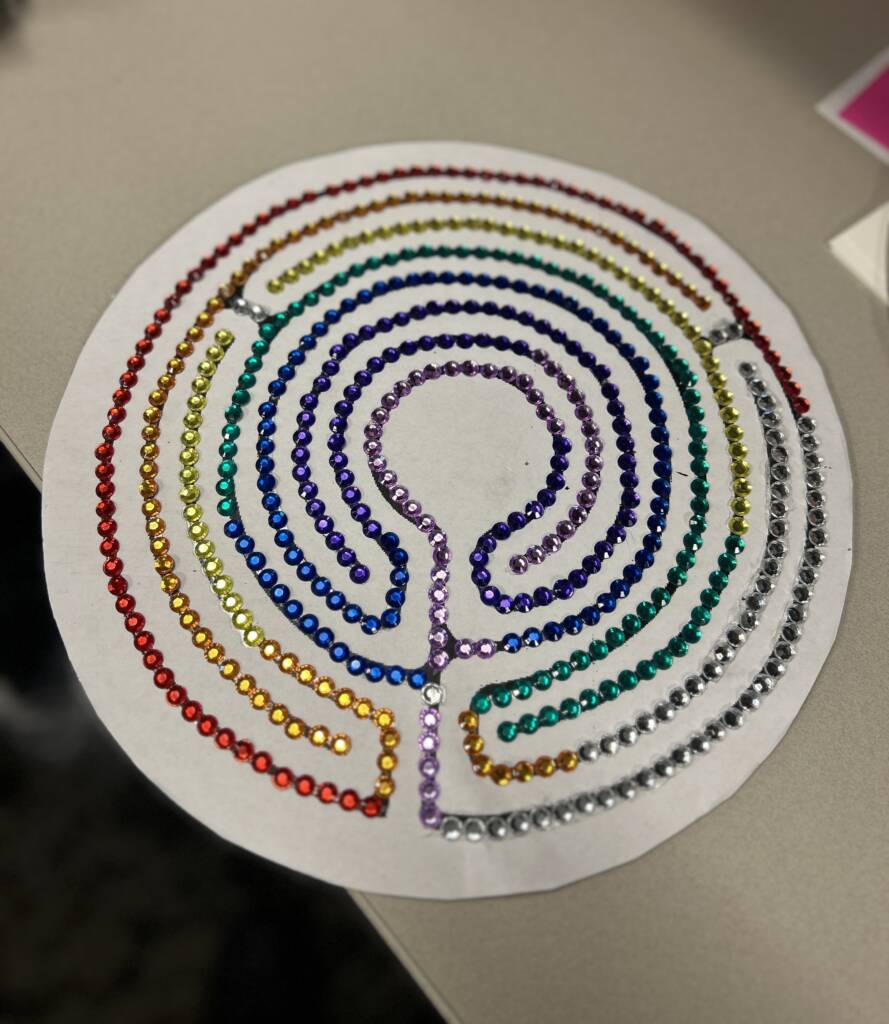
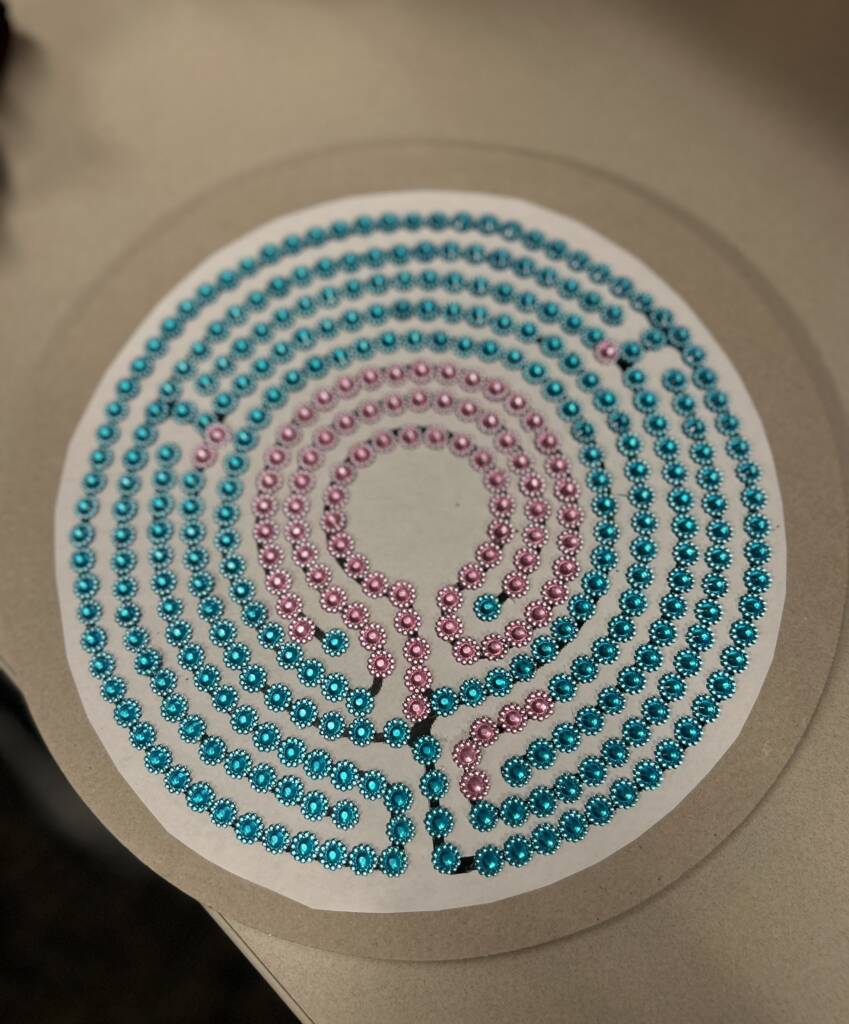
Students participating in a Wellness Weekend at TSBVI participated in the following lesson planned and prepared by paraeducator, Neely Kulhanek, from the TSBVI Short-Term Programs website.
The Wellness Weekend class introduces students to a variety of health and self-care options designed to discover useful strategies to develop personal wellness goals and practices that they can continue to refine throughout their lives.
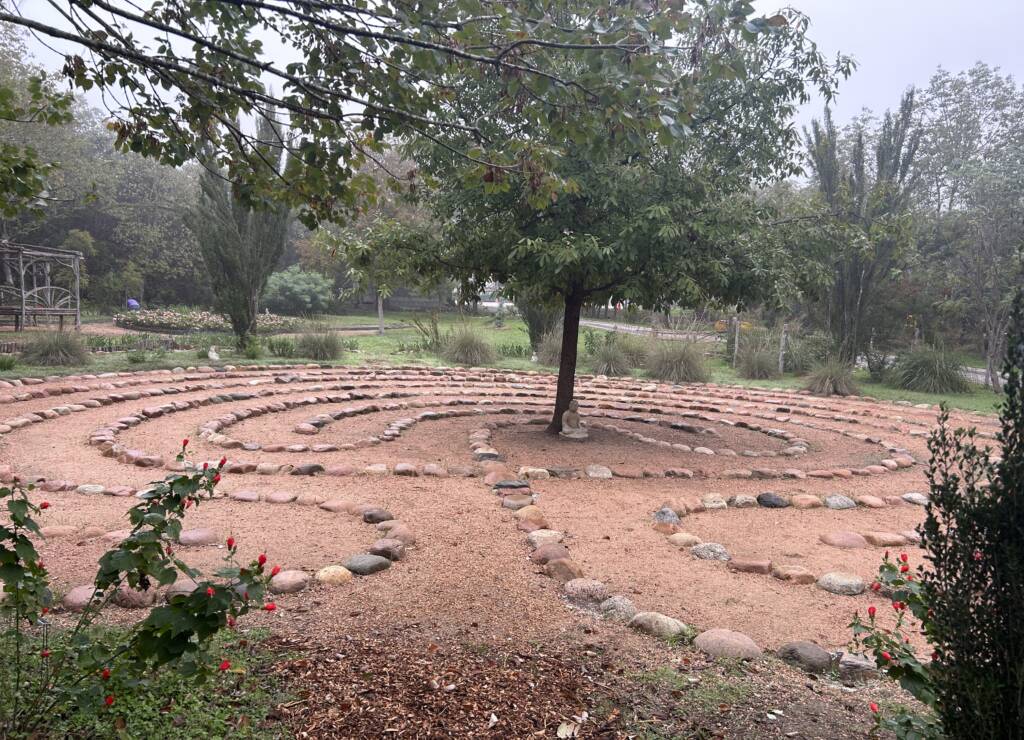
Lessons and activities focus on:
- Stress management and self-care, relaxation, and mindfulness techniques
- Sound nutritional choices and alternatives to “empty calories”
- Low-cost, widely available opportunities for recreation and leisure
- Non-visual sensory (e.g., sound, aroma) experiences
- Development of individualized wellness goals
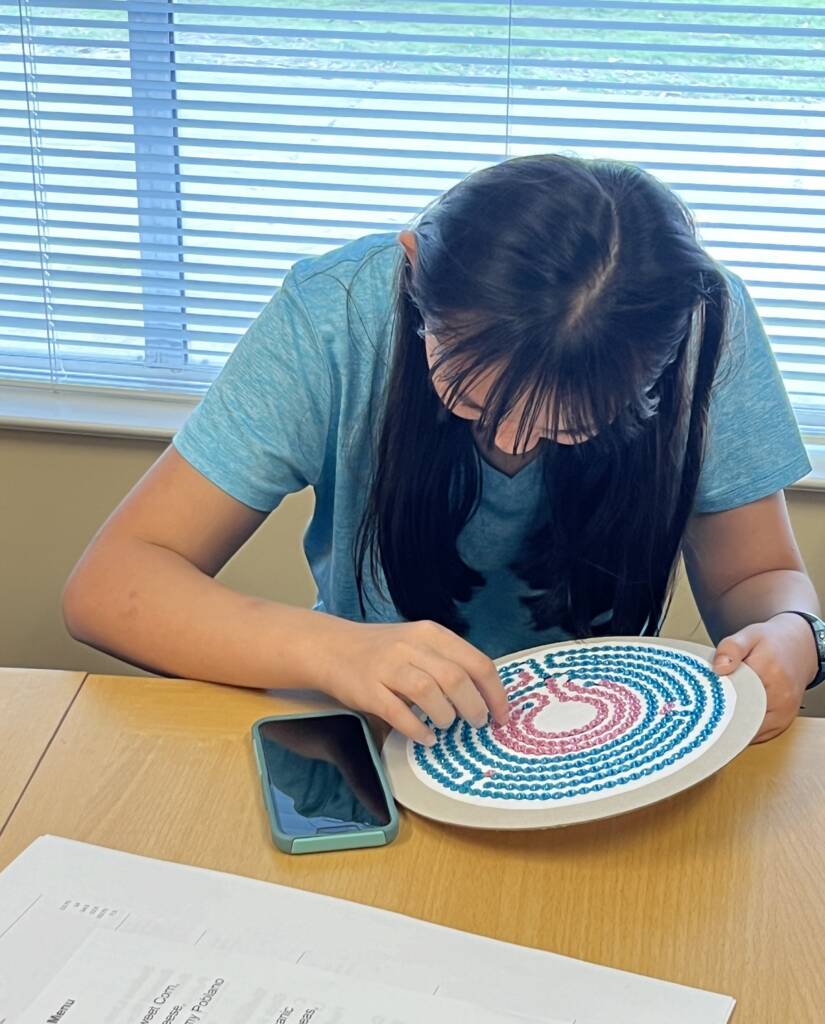
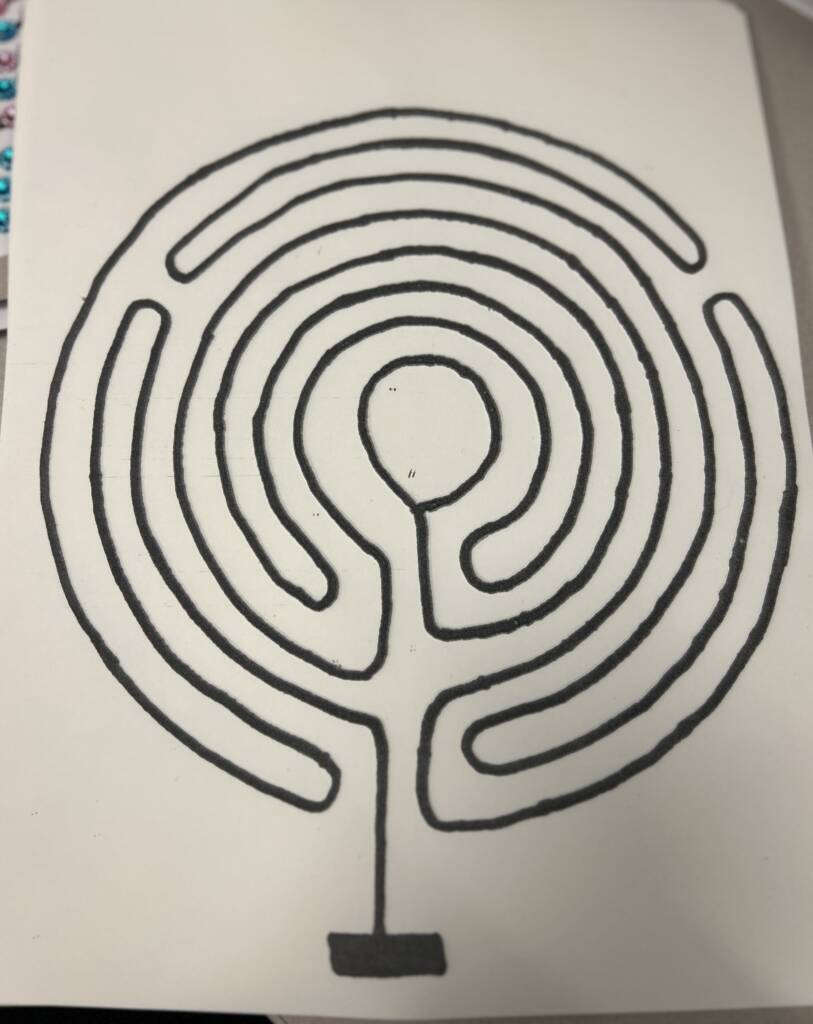
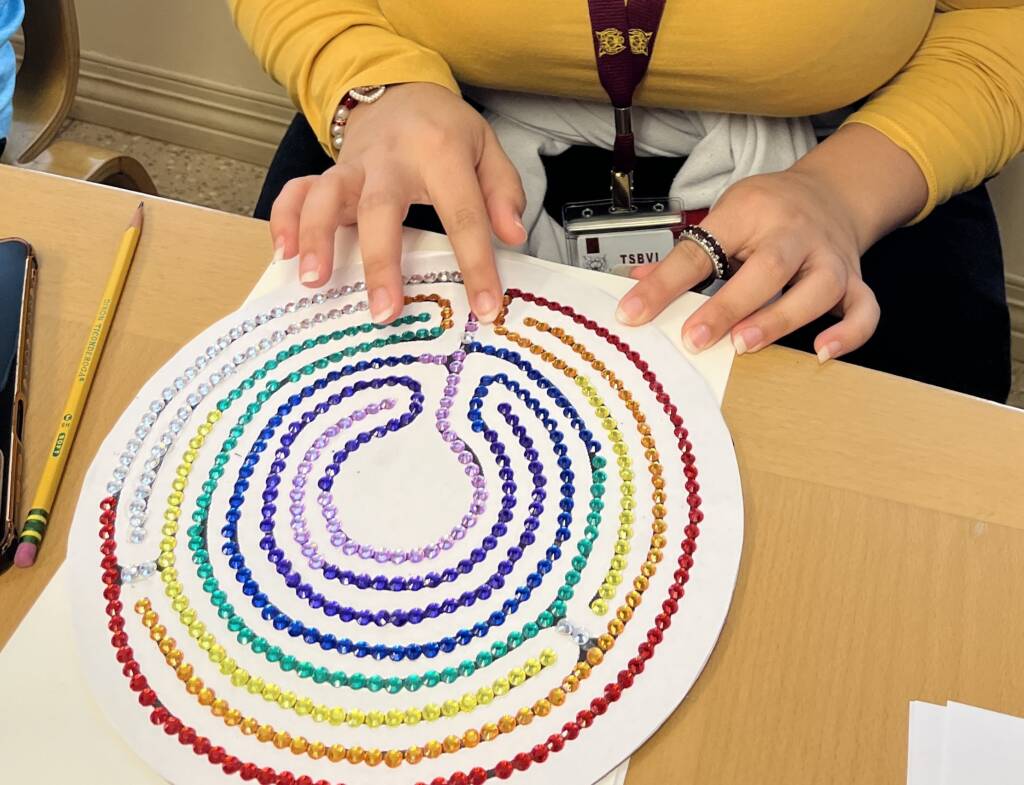
Neely’s lesson focused on mindfulness, reflection, relaxation, and managing anxiety. The Labyrinth Society defines a labyrinth as “a meandering path, often unicursal, with a singular path leading to a center. Labyrinths are an ancient archetype dating back 4,000 years or more, used symbolically, as a walking meditation, choreographed dance, or site of rituals and ceremony, among other things.” One activity in the class was for students to visit a labyrinth. In order to prepare for this reflective walk, students were provided with several tactile versions of the specific labyrinth they would encounter. They discussed mindfulness and reflection, along with the intentions of the trip.
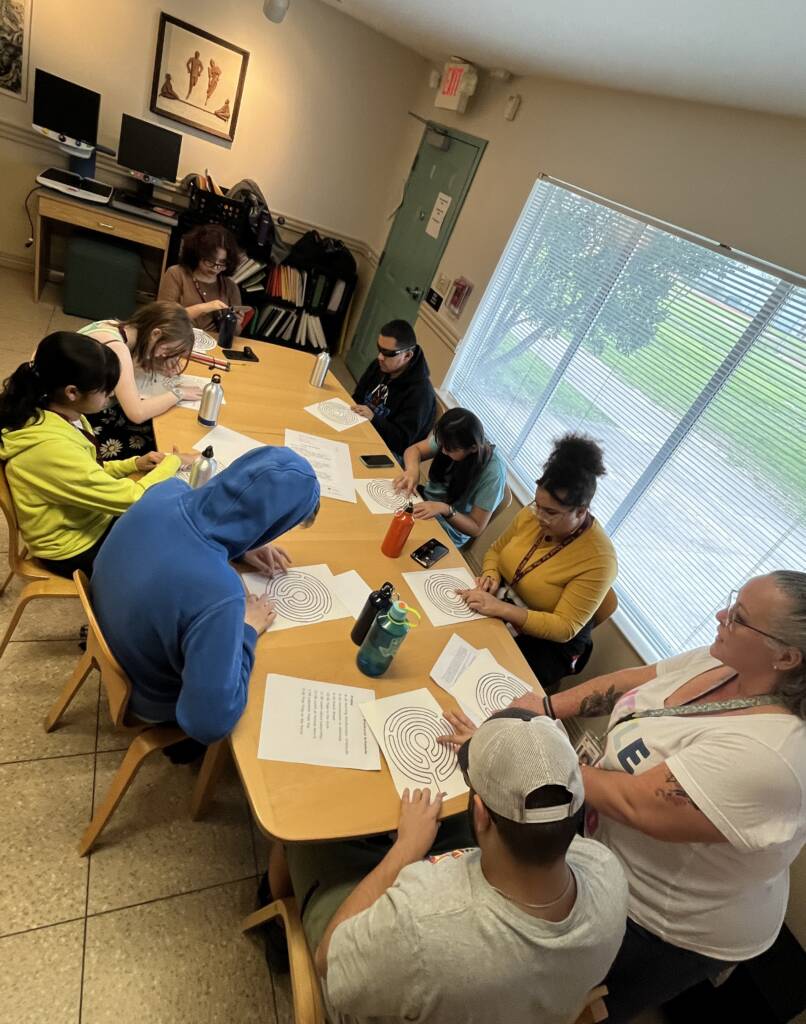
In addition to learning about wellness within this lesson, a lesson on labyrinths provides opportunities to provide instruction in concepts such as:
- Circular shapes
- Search patterns
- Routes
- Tracking and tracing
- Positional concepts such as left, right, top, bottom, outer, inner, center
- Tactile mapping
- Shorelining
- Spatial concepts in the environment
Adaptations and Extension
- For young students, or those who have minimal exposure to tactile graphics, consider widening the path of the labyrinth and reducing the number of lines to ensure acquisition of tactile information.
- Provide sentence starters to prompt students to reflect or set intentions prior to walking or tracing through the labyrinth.
- Ask students to create their own labyrinths with materials of their choice.
- Create a labyrinth in your classroom with floor tape, pool noodles, or desks.
- Allow students to carry a tactile labyrinth with them to trace during times when they are feeling unsettled or overwhelmed.
- Ask students to write about mindfulness, goals, or intentions.
